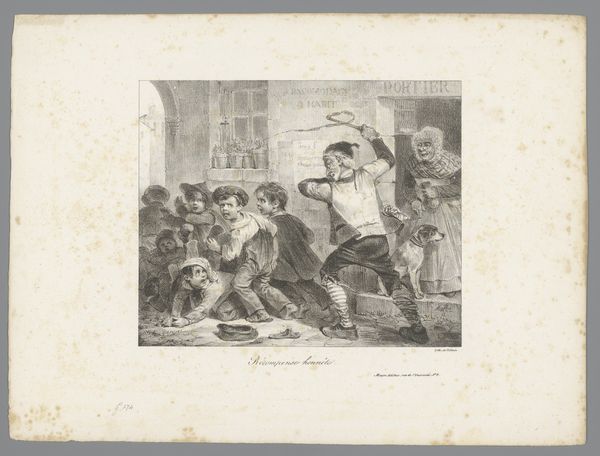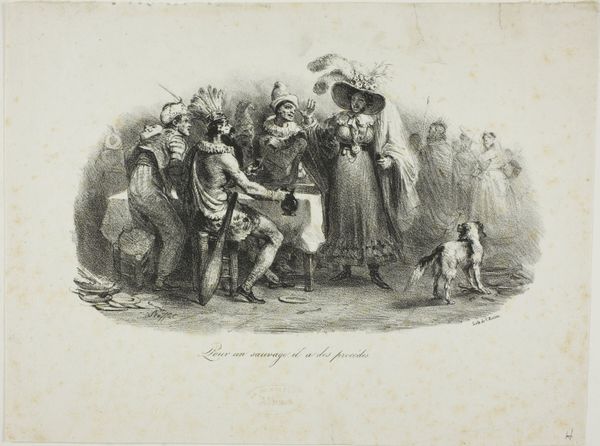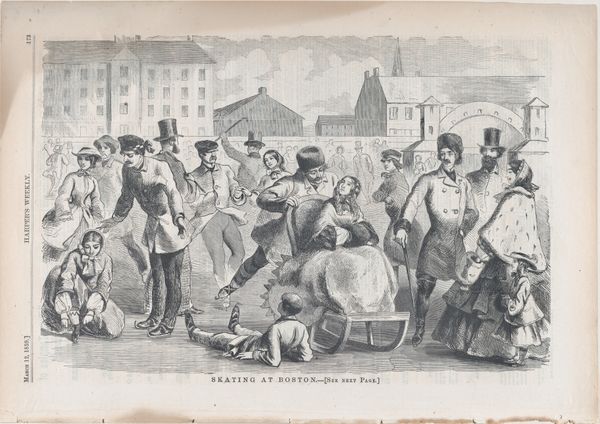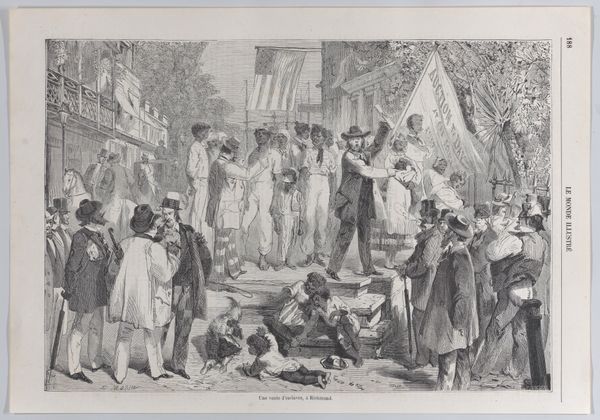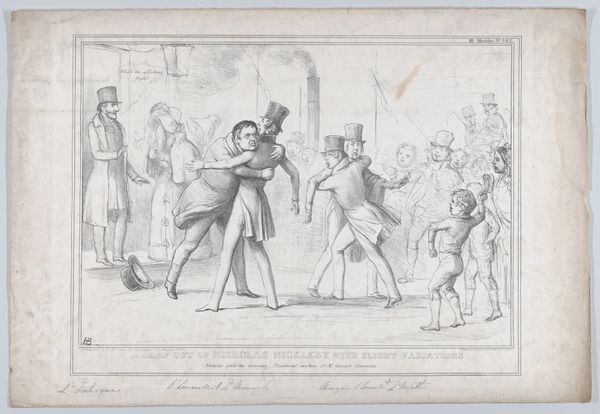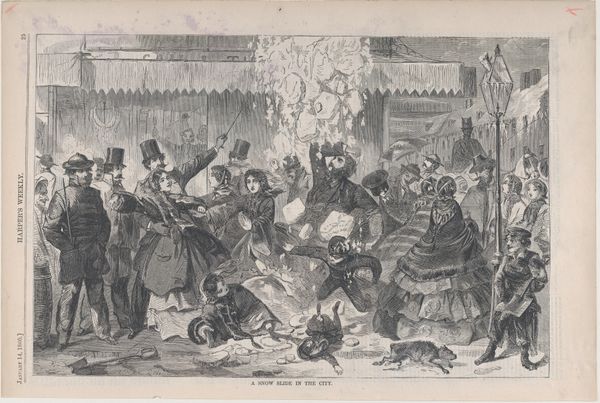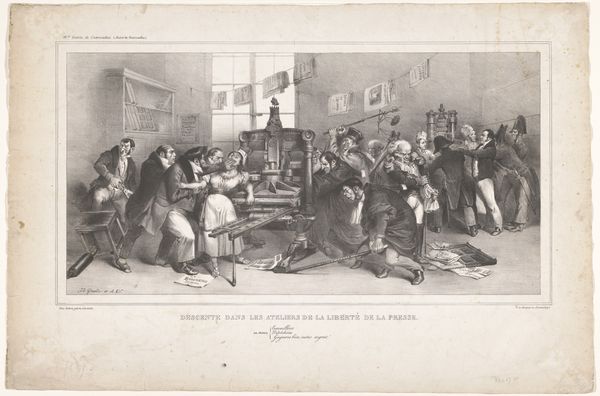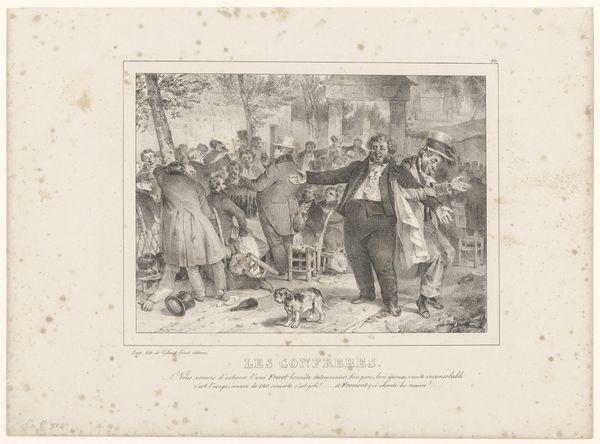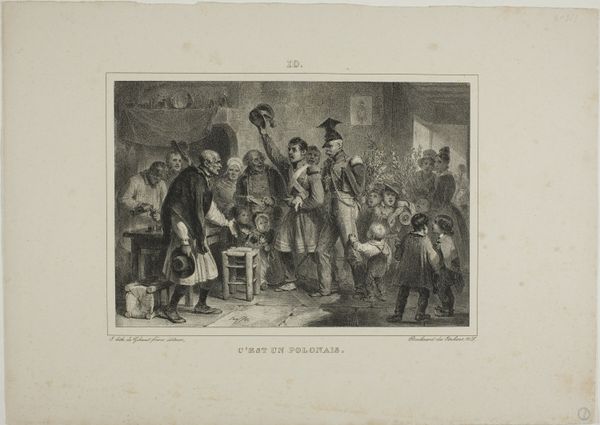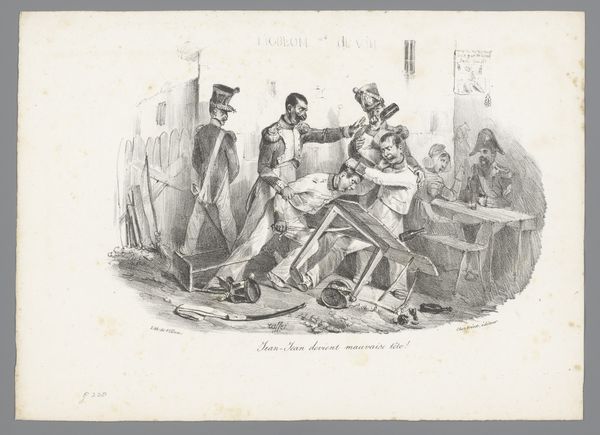
drawing, lithograph, print
#
drawing
#
narrative-art
#
lithograph
# print
#
caricature
#
pencil sketch
#
figuration
#
romanticism
#
genre-painting
Dimensions: height 221 mm, width 305 mm
Copyright: Rijks Museum: Open Domain
Auguste Raffet created this lithograph of Jean-Jean in the 19th century. Lithography is a printmaking process that relies on the chemical repulsion of oil and water. The artist draws on a stone or metal plate with a greasy substance, then applies ink, which adheres only to the drawn areas. The print is then made by pressing paper against the plate. Here, the relative ease and speed of the lithographic process allowed Raffet to capture a fleeting moment. We see two soldiers having slipped, probably on ice. The fallen soup terrine has scattered its contents across the street. Lithography allowed for relatively quick reproductions, meaning that this image could be widely disseminated and consumed by a broad public. Consider how the marks made with grease pencil build up a sense of volume and texture, bringing this comic scene to life. The use of lithography democratized image-making, allowing for wider participation in visual culture. It reflects a shift towards mass production and consumption, bringing art closer to the everyday lives of people.
Comments
No comments
Be the first to comment and join the conversation on the ultimate creative platform.
